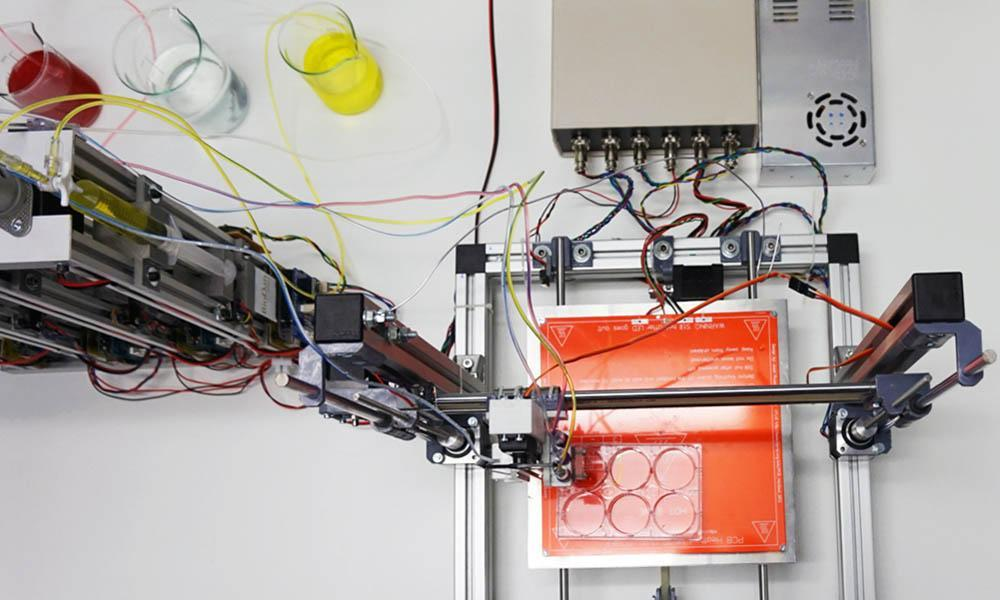
Many people know from anatomy that the skin acts as a “protective shell” for human and animal organisms. It consists of two parts – the epidermis (the upper multilayer surface of the epithelium) and the dermis (the connective tissue part that unites the epidermis and the muscular tissues of the body). The skin occupies a large area on the human body. In adults it reaches 1.5-2.3 m2. Its main task is to protect the body from a wide range of external influences. Skin cells, like respiratory organs, take in oxygen, with which they enrich their activity in the body. In various traumatic situations (e.g., burns and major cuts) a person may lose his or her “protective shell”. It takes a long time for the skin to heal and recover. So to facilitate this process and help the skin to look healthy, scientists have developed versions of artificial human skin that will speed up healing on the body.
The construction of artificial skin is as follows – on the collagen gel (the basis of the artificial skin), which contains dermal cells – fibroblasts (this is an analogue of dermis, having a large amount of collagen and fibroblasts), put the top layer of epithelial cells – keratinocytes, which are exactly like the epidermis – the top layer of skin. Thus, the artificial skin consists of two layers, just like real human skin. A finished product with the same structure as the patient’s skin is placed on the wound, and the healing process begins.
Although the artificial skin itself takes root only temporarily, its constituent cells actively secrete various growth factors that stimulate the patient’s own cells to divide and migrate to the wound area. Thanks to this, the wound begins to heal faster around the edges. The skin regenerates. The donor cells are gradually replaced by the newly formed cells of the patient himself. Of course, the patient’s own skin from undamaged areas can also be used as a source of skin, but in the case of large-area burns, this is usually not enough. Since artificial skin resembles real human skin in its structure, it is also used for bionic prostheses with preservation of sensitivity.
In Russia, the new material was developed in the course of obtaining a mixture of latex and bioactive plant components. The artificial tissue fits tightly to the wound, protects it further from external influences and performs the healing process. Scientists note that the most complex injuries with the new “skin” are tightened within two days. The Institute of Theoretical and Experimental Biophysics of the Russian Academy of Sciences has created an ideal wound covering that protects the diseased place from mechanical damage and harmful infections. In addition, the artificial skin creates optimal conditions for cell growth and allows air and water vapor to pass through, so that the wound under such a coating does not dry out or get wet. When the thinnest film is applied to the wound, cells begin to transfer into it, mixing with the patient’s cells, and activating collagen production for wound healing and scar formation. The latex “backing” is then simply detached, and there is no need for medics to torment patients with endless dressings. And after discharge, the patient can use therapeutic ointments on their own, applying them to the latex film, which has micro pores just like normal skin.
In 2019, scientists created for the first time a 3D bioprinter that prints skin in two layers of a patient’s own skin right on the wound. Experts from the Institute for Regenerative Medicine (USA) worked on this research. The printer uses “ink”, which consists of the patient’s cells, to minimize the risk of rejection. First, a biopsy of the patient’s healthy skin is made and a large number of cells are grown, then they are mixed with hydrogel to form the “ink” of the 3D-bioprinter. More precisely, two types of “ink” are created – for the inner layer (from fibroblast cells) and the outer layer (from keratinocytes). After successful experiments performed on mice, an excellent result was obtained, which in the future will allow clinical trials on humans.





